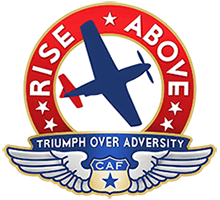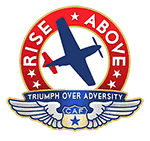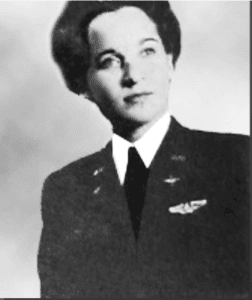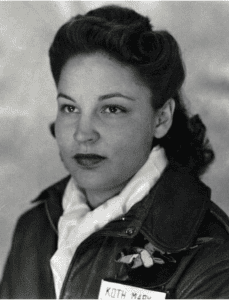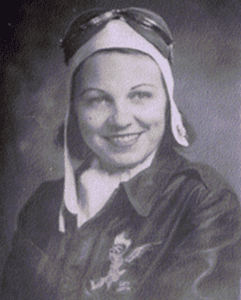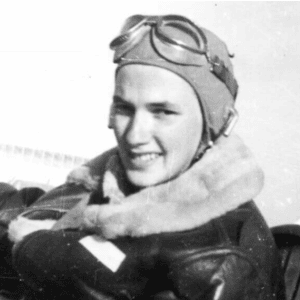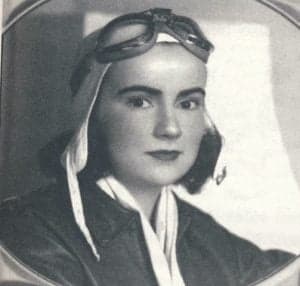 Barbara Jane Erickson London
Barbara Jane Erickson London
July 1, 1920 – 2013
Class: WAFS
Training Location: New Castle Army Air Base (Wilmington, Del.)
Planes flown: PT-17, PT-13, BT-13, BT-14, AT-6, A-20, P-38, P-51
Assigned bases: New Castle Army Air Base (Wilmington, Del.) and Long Beach Army Air Base (Calif.)
Barbara Jane Erickson, known as B.J. to the other Originals and the WASP under her command in the squadron at Long Beach, was born July 1, 1920 in Seattle, Washington. She learned to fly floatplanes through the CPT program at the University of Washington where she was a student in 1939 where she was 1 of 4 women in a class of 40. She soloed in a Taylorcraft Seaplane at Lake Union, Seattle, that year and earned her private pilot’s license in 1940.
After acquiring her private, commercial and instrument ratings, as well as her flight instructor’s certificate, Barbara returned to Lake Union as an instructor for the University of Washington flight school. There, in the same program from which she graduated, she taught other young students how to fly.
Her job on Boeing’s line began after Pearl Harbor. The government shut down all civilian flying within fifty miles of the U.S. coastline and Barbara was out of a flight-instructing job. Working at Boeing through May 1942 helped her finance the last few months of her education.
Barbara’s leadership potential was obvious from the beginning. The dean of women had seen it and Buren Reeder, her supervisor at Boeing, now recognized it as well. He supported her dreams and ambitions, and the two remained lifelong friends.
Early in 1942, Barbara received a telegram from famous aviatrix Jacqueline Cochran, asking her to consider going to England to ferry airplanes for the British Air Transport Auxiliary, but she opted to finish school instead. In May 1942, following graduation, Barbara took a job at the Martin School of Flying in Walla Walla, Washington, far enough inland to remain in operation. The Martin school was, also, training men to be Army flight instructors.
All the boys were experienced pilots and had hundreds of hours. At first, they didn’t like the idea of a girl instructing them. Here I was twenty-two-years-old, just out of college, attractive, dedicated. But we were all in the same boat, up at 4 in the morning in order to fly at 5. We all wanted to succeed and I showed them I could do it too. I always had a smile on my face. I enjoyed what I was doing. Basically, I get along with people and I gained rapport with them. They finally were resigned to their fate and accepted me.
On September 6, 1942, Barbara received a telegram from another veteran woman flyer, Nancy Love, inviting her to come to Wilmington, Delaware, and apply for the Women’s Auxiliary Ferrying Squadron (WAFS), a group of civilian women pilots attached to the U.S. Army Air Forces. “I requested leave from my job. Fortunately, I was working for a flight school operator who would let me go. Others weren’t so lucky.”
Barbara–who acquired the nickname B.J. in Wilmington because there were four Barbara’s among the original 28 WAFS–was the 14th woman to join Nancy Love’s elite squadron of women ferry pilots. Their original assignment was to ferry trainer airplanes from the factories to the training fields in the South. Later, they flew bigger, faster aircraft–but always within the 48 states and Canada.
A friend, Eleanor Dressen, who was working at the flight school with Barbara, accompanied her to Wilmington. Not long after they arrived, Nancy Love’s secretary left and Eleanor got that job.
In the fall of 1942, Jacqueline Cochran–with the Army’s backing–established a flight school in Texas to train women pilots. These women, once they won their wings, were destined to ferry airplanes as part of Nancy Love’s squadron.
In January 1943, Nancy divided her original WAFS squadron into four smaller squadrons to be stationed at ferrying bases around the country. She placed B.J. in command of the women’s squadron attached to the 6th Ferrying Group in Long Beach, California. B.J. was only 22 years old. Several of the WAFS were older and more experienced. Some were jealous. But Nancy felt she was the one to handle the job and told her, “B.J., I’m going to forget Long Beach. You can take care of it.”
This made young Barbara Jane Erickson privy to all the Army’s Ferrying Division and Air Transport Command discussions, planning, and decisions concerning the women pilots from then until the deactivation of the group in December 1944. It may have been one of the most intuitive moves WAFS commander Nancy Love ever made. Super-organized B.J. became her friend, her confidante, her able leader on the West Coast.
During July and August, 1943 she flew 8,000 miles in 10 days. Including four 2,000-mile trips delivering P-47, P-51 and C-47 aircraft in less than a week.
For these flight, General “Hap” Arnold awarded her the Air Medal, the only one awarded to a WASP during WW II.
Erickson initially tried to decline the honor, feeling that she had performed an ordinary mission and that she should not be singled out from among the other WASP for a special honor, but she was directed to comply and in a formal ceremony at the graduation of Class 44-W-2 in Sweetwater, Gen. Henry ‘Hap’ Arnold presented the Air Medal to Erickson. Seated on the podium at the ceremony were both Nancy Love, Exec. WASP/ATC and Jacqueline Cochran, Dir. WASP and several high-ranking U.S. Army Air Forces generals.
B.J. delivered her first B-17 as pilot-in-command on October 31, 1944. She and WASP copilot, Virginia Hill, took the aircraft from Long Beach to Cheyenne, Wyoming.
B.J. was one of only five women pilots in the Ferrying Division, Air Transport Command, to hold the rare “5p” classification, which meant she was qualified to fly as pilot-in-command on heavy four-engine aircraft like the B-17 as well as the swift, powerful single- and twin-engine pursuits.B.J.’s contribution to the WASP during the twenty-eight months of the group’s existence is incalculable. She commanded some 80 women ferry pilots stationed at Long Beach. Like Nancy, B.J. was goal-oriented, operated by the book, and led by example with firmness and reason. That was why both women got along so well. “No Nonsense” might well be B.J.’s middle name.
Barbara Jane Erickson, the twenty-one-year-old who worked for five months as part of the B-17 wing assembly team at Boeing in 1942, was the only WASP in World War II who both flew and built the B-17.
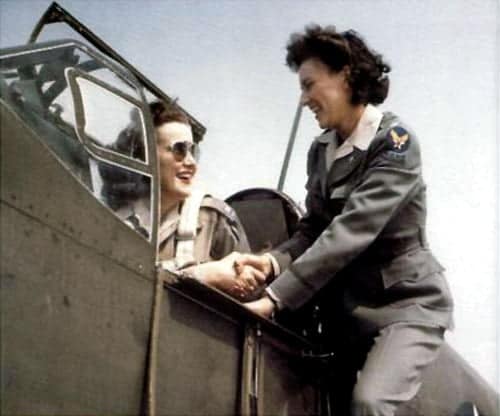
Sources:
Sarah Byrn Rickman
Megavision.net
Texas Women’s University, Denton, Texas. WASP collection
TheFreeLibrary.com
WAFS pilots Barbara London (in cockpit) and Evelyn Sharp, 1942-1944
